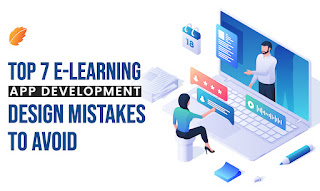AI App Development: 5 Easy Steps to Get You Started
Have you ever wondered how smart assistant apps like Siri, Alexa and Google Assistant understand verbal requests so well? Or how apps like Snapchat and Pinterest recognize faces and objects in images?
The secret lies in artificial intelligence (AI)!!
AI refers to simulated intelligence in apps powered by technologies like machine learning, neural networks, natural language processing (NLP) and computer vision.
AI apps use these technologies to learn from data, analyze content, predict outcomes, automate tasks and interact intelligently with users. AI capabilities enable apps to continuously improve and provide personalized experiences not possible earlier.
If you want to build the next cutting-edge mobile app with features like virtual assistant, image recognition, recommendation engine or analytics, integrating AI is essential.
Read on to learn how to get started with AI app development in five simple steps.
Step 1 - Understand The Basics of AI Apps
The first step is developing core knowledge about what AI is, its popular techniques and use cases in mobile apps.
Some key highlights:
- Machine learning- algorithms like regression and neural networks uncover patterns from training data to make predictions. ML powers recommendation engines.
- Natural language processing (NLP) enables processing and interpreting text data like conversations. NLP is used in chatbots and virtual assistants.
- Computer vision involves analyzing visual inputs like images and videos. It enables facial recognition, object identification and more.
- Artificial intelligence app development refers to using such AI techniques to add intelligent features into apps.
Here are some common examples of AI apps:
- Intelligent assistants like Siri, Alexa and Google Assistant use NLP to understand voice requests and have human-like conversations.
- Recommendation systems on apps like Netflix and Amazon use ML to suggest personalized content and products to users.
- Snapchat and Pinterest apply computer vision for features like facial filters and object recognition in images uploaded by users.
So in summary, AI apps leverage technologies like ML, NLP and computer vision to understand unstructured data, analyze information and mimic human intelligence when interacting with users.
Step 2 – Choose The Right AI Tools and Frameworks
Once you understand artificial intelligence app capabilities, the next step is choosing the right tools and frameworks aligned with your use case.
Here are some top AI app development options:
- TensorFlow- Open-source library for dataflow programming and machine learning by Google. Used across products like Search, Photos and Translate.
- PyTorch - Open-source ML library used by companies like Facebook and NVIDIA for computer vision and NLP models using Python.
- Microsoft Cognitive Services - APIs and SDKs for vision, speech, knowledge and search APIs by Microsoft. Integrates well into Azure cloud.
- IBM Watson - Toolkits by IBM including natural language, visual recognition and personality insights to build AI apps.
- Amazon AI- Managed AI services like Lex, Polly and Rekognition from AWS to build conversational and visual apps.
Evaluate options based on your AI app capabilities, technical skillset and cloud platform to choose the right toolkit.
Step 3 – Collect and Prepare Training Data
The next crucial step is gathering quality training data to teach your AI algorithms.
For instance, a chatbot requires conversational data like sample dialogues to learn how to respond properly. A computer vision app needs many labelled images of objects to recognize them accurately.
Follow these best practices when curating training data:
- Accumulate data from reliable sources relevant to your problem statement.
- Clean data by fixing missing values, duplicates, errors and outliers.
- Structure and label data to train supervised ML models.
- Expand the dataset with techniques like cropping/rotating images for computer vision.
- Continuously test models and enrich training data to improve accuracy.
Properly preparing training data is key to developing accurate AI apps.
Step 4 – Build and Integrate Your AI Model
With the fundamentals covered, now you can develop a custom AI app development model for your app's use case.
Follow this model development process:
- Train model prototypes on prepared datasets using frameworks like TensorFlow executing on cloud GPUs.
- Optimize models by tweaking parameters and architectures to improve accuracy metrics like precision and recall.
- Select the best performing model and export it along with dependencies to integrate into app codebase.
- Call model APIs from app code to run AI predictions and return results to display in the app UI.
- Cache model responses to optimize latency and costs.
Be sure to continuously test model on new datasets and re-train regularly to maintain high accuracy as artificial intelligence app data evolves.
Step 5 – Optimize The AI Assistant Experience
The final step is rigorous testing and iteration to refine your AI app. Focus on:
- Performance - Measure and reduce model latency, traffic and costs by code and infrastructure optimizations.
- Scalability – Scale capacity seamlessly by deploying AI models on cloud platforms like AWS SageMaker.
- Accuracy – Regularly test model on new data and re-train to sustain high precision.
- UX- Integrate AI seamlessly into app UI with contextual and human-like responses.
- Security - Anonymize data, encrypt models and ensure transparency.
This comprehensive optimization will refine your AI assistant, chatbot or computer vision app to deliver secure, easy-to-use and intelligent experiences.
Conclusion
Developing AI apps has huge potential but can seem daunting initially. The key is breaking it down into smaller achievable steps:
- Learn AI app development fundamentals
- Select the optimal AI tools and frameworks
- Curate quality training data
- Build, train and integrate machine learning models
- Optimize the AI app experience
At Consagous Technologies, our AI app developers help companies design, develop and deploy AI-powered mobile apps tailored for their needs.
Contact us today for a personalized demo and consultation on building the next generation of intelligent apps!

Hire best dating app developers to build perfect dating app.
ReplyDelete